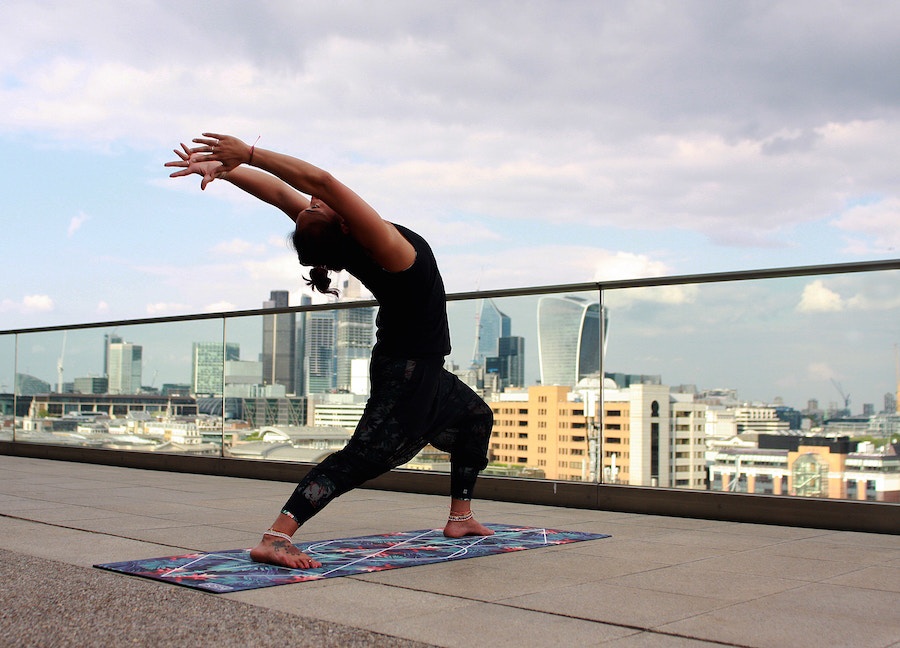That irritating niggle at the base of your spine. That dull ache after a core workout. That urge to stretch and contort your back to get relief. Having lower back pain can be a pain in the… back, especially when it’s stopping your usual exercise routine or punishing you after working up a sweat!
There are ways to combat lower back pain, and surprisingly it’s not all about targeting your lower back with strengthening routines. We will look into great exercises that can help strengthen your lower back, but also nifty exercises that strengthen your core and other parts of the body that can help you bid farewell to that ache!
Lower Back Pain: What’s happening?
Back pain is a touchy subject. It differs in every case and can range from dull aches to acute, sharp sensations. It can last for a few days then disappear, or it can trouble you for weeks on end which not only impacts you physically, but can really weigh heavily on your mental state…. But you’re not alone.
Did you know that 80% of adults in the UK experience Lumbago (lower back pain) at some point in their lives? It’s one of the top reasons why people take sick days from work and it can be a result of a huge range of factors; from poor posture at your desk to weak muscles being overworked.

Back pain can be the result of many different causes. From sprains and strains of ligaments, tendons and muscles, to disc ruptures or degeneration. However, one aspect which we’ll look into is fitness level. Weak back and abdominal muscles mean the spine is not properly supported, which causes these aches and pains.
Those who are frequently inactive and lead sedentary lifestyles are at high risk of experiencing back pain. Being desk bound during the week at work can wreak havoc on your body - it’s time to stop being a couch (or desk!) potato and integrate movement into your days as much as you can!
The ‘Weekend Warriors’ are at risk!
So you’re chained to your desk and tied down by evening responsibilities during the week, then smash it hard on the weekend to make up for your inactivity? You, my friend, are a ‘weekend warrior’. And also, my friend, you're at risk of injury.
Many weekend warriors can push themselves to the point of injury to make up for the inactive week - the transition from little or no activity to sudden intense sessions on the weekend can strain your muscles.

Fitness needs to be a frequent occurrence in order to benefit your body - muscles and soft tissues need gradual conditioning to perform at their best. Without proper conditioning, muscles, ligaments and joints are susceptible to strain and injury - it can place a lot of strain on your spine and result in injuries, particularly to the lumbar (the lower back).
There are a few tips to help condition your body and avoid injury when you lead a desk-bound life Monday - Friday:
-
Build activity intensity up slowly over time.
-
Build core strength and stretch very day.
-
Warm up correctly before a session and cool down afterwards.
-
Know your limits - don’t push yourself through serious pain.
-
Learn correct techniques.
-
Be careful in the gym! Know how to use equipment correctly.
When experiencing back pain, it’s always best to seek medical advice or be checked out by a physical therapist before trying any exercises to help strengthen your lower back.
Should I workout if I have lower back pain?
In order to perform any physical activity that requires strength, your core, abs, back and muscles around the pelvis are all utilised. When muscles in these areas are weak, working out can strain your back - low impact aerobic exercises are incredibly beneficial for maintaining the integrity of your intervertebral discs. Build core strength and stretch every day to help keep mobility and lower your risk of Lumbago!

Always stay active within the limits of your pain. You’ve got to keep the muscles that support your spine strong, and prevent scar tissue that can cause stiffness. You may want to lie down and pray the aches away, but begin stretching and get back to your normal activities as soon as possible (avoid movements that aggravate).
Studies have found that those that remain active with their normal everyday activities maintain back flexibility better than those who have bed rest for a week. Some studies even have found that bed rest can make the pain worse. Not ideal.
So... what key exercises can strengthen your lower back?
The best defence is an offence. Time to strengthen that lower back to avoid any injuries and reduce your risk if you’re already feeling those niggles. Avoid high impact exercises if you have acute low back pain and avoid any movements that cause you pain.

Strengthening exercises are recommended for chronic or subacute lower back pain. They can also help improve your posture and muscle balance, which will all help in keeping that pain at bay in the future.
1. Strengthen your lower abs:
These muscles work in harmony with your lower back muscles. If they’re weak, they can make the lumbar tighten which will give you pain.
-
Lie on your back with knees bent and feet flat on the floor.
-
Breathe in and as you breath out, bring one knee to your chest.
-
Breathe in and place the foot back on the floor.
-
Repeat 6 - 8 times on each leg
Source: penrosept.com
2. Strengthen your butt:
The gluteus maximus - the large muscles of the buttocks - is one of the strongest muscles in the body and helps all hip movements. When your bum is weak, they don’t do the job of stabilising the hip joints for movements as simple as walking. Time to tighten up those buns!
Bridge exercise:
-
Lie on the ground on your back with your feet flat on the ground, hip-width apart. Have your heels as close to your bum as possible.
-
Keep your hands at your sides and press your feet into the floor.
-
Slowly raise your bum off the ground until your body is in one straight line with your shoulders staying on the floor.
-
Clench your butt muscles and engage your core (pull your belly button towards your spine).
-
Lower down and rest.
-
Repeat 15 times and perform 3 sets.
Source: healthline.com
3. Yoga movements:
Regular yoga has been known to help strengthen your core and improve posture. It can help lengthen your spine, stretch and strengthen key muscles and even help adjust the alignment of your spine.
-
Get on all fours and have hands under your shoulders and your knees directly under your hips.
-
Have your spine in a neutral position - keep your neck in line with your spine.
-
Extend one leg and opposite arm straight out. Do not let your lower back sag.
-
Engage your core and stretch your extended limbs out for 5 - 10 seconds.
-
Lower and repeat 10 times on each side.
Source: penrosept.com
4. Back extensions:
-
Lie on your front and rest on your forearms with elbows bent at your sides.
-
Keep your neck straight and look towards the floor.
-
Arch your back up by pushing down on your hands (only go as far as is comfortable).
-
Breath and hold for 5 - 10 seconds. You should feel a gentle stretch in your stomach muscles.
-
Return to starting position then repeat 8 - 10 times.
Source: nhs.uk
5. Supermans:
-
Lie on your stomach with arms extended out in front of you. Have your legs long behind you.
-
Lift your hands and feet off the ground (around 6 inches) or until you feel contraction in your lower back.
-
Engage your core muscles by slightly lifting your belly button off the ground, pulling it towards your spine. Reach away with your hands and feet.
-
Hold for 2 seconds.
-
Return to starting position then repeat 10 times.
Source: healthline.com
Keeping all round strength in your muscles will help protect your back when enduring exercise. From butt to abs, these key muscle groups can work in harmony when strong and allow you to train to keep your back strong. Strength training is fab for this so don’t shy away from the weights section of the gym or bodyweight exercises, and a good ole stretch on a daily basis can do wonders.


